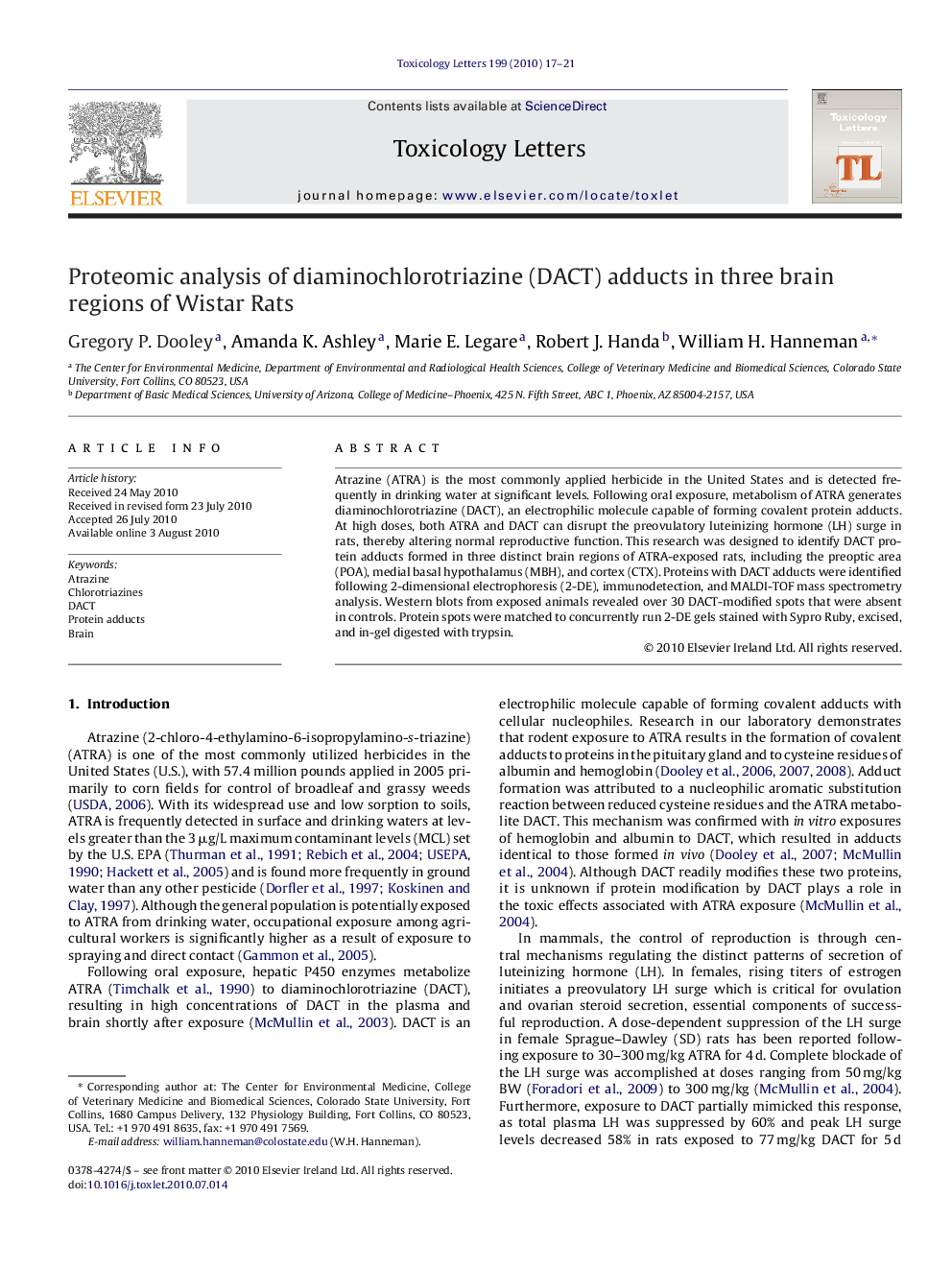| Article ID | Journal | Published Year | Pages | File Type |
|---|---|---|---|---|
| 2600515 | Toxicology Letters | 2010 | 5 Pages |
Atrazine (ATRA) is the most commonly applied herbicide in the United States and is detected frequently in drinking water at significant levels. Following oral exposure, metabolism of ATRA generates diaminochlorotriazine (DACT), an electrophilic molecule capable of forming covalent protein adducts. At high doses, both ATRA and DACT can disrupt the preovulatory luteinizing hormone (LH) surge in rats, thereby altering normal reproductive function. This research was designed to identify DACT protein adducts formed in three distinct brain regions of ATRA-exposed rats, including the preoptic area (POA), medial basal hypothalamus (MBH), and cortex (CTX). Proteins with DACT adducts were identified following 2-dimensional electrophoresis (2-DE), immunodetection, and MALDI-TOF mass spectrometry analysis. Western blots from exposed animals revealed over 30 DACT-modified spots that were absent in controls. Protein spots were matched to concurrently run 2-DE gels stained with Sypro Ruby, excised, and in-gel digested with trypsin.
